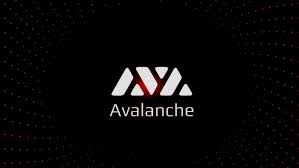An A-Z Guide to the “Ethereum Killer” Called Avalanche

Avalanche is a public blockchain designed to scale throughput at low costs while maintaining speed, security, and decentralization. The Avalanche network uses AVAX as a native coin for paying transaction fees and accessing applications built on the network.
When bitcoin was released back in 2009, it introduced the world to blockchain technology as a distributed ledger for recording transactions. Bitcoin opened up a host of other possibilities like borderless payments, machine-to-machine transactions, and the world of decentralized protocols. It also paved the way for the invention of many blockchain projects, including Ethereum, the second-largest cryptocurrency in the world.
Read also: A Simple A-Z Guide for Starters On STEPN (GMT)?
As the industry evolved, it met up with the technical limitations of both Bitcoin and Ethereum networks such as scalability, security, and interoperability. For instance, Bitcoin’s Proof-of-Work consensus requires computer-intensive resources to validate transactions. Aside from this, the network can only enable peer-to-peer payment systems.
Similarly, Ethereum established a newer protocol with smart chain functionalities which facilitated the building of other decentralized applications. However, Ethereum struggled to scale, leading to high gas fees and low speeds during periods of peak demand. Since Ethereum woes became known, several blockchain projects devised a path (roadmap) to solve the problem.
The Avalanche network is one such project aiming to introduce a variety of innovations to solve the decentralization, scalability, and security challenges of earlier blockchains. The platform prides itself on being the fastest smart contract protocol in the entire cryptocurrency space.
What is Avalanche?
Avalanche is a blockchain platform created by a group of developers including Kevin Sekniqi, Marfan “Ted” Yin, and Emin Gün Sirer. The project was launched in September 2020 by Ava Labs, a New York-based software company. Before that, a group of pseudonymous developers known as Team Rocket released data containing the network’s blueprint on the InterPlanetary File System (IFS).
The Avalanche project has raised close to $300 million for its development. In 2020, AVAX labs raised a total of $60 million in both private and public token sales. In 2021, the project secured a further $230 million to build its ecosystem.
The fundraising made the project a topic of interest and its fame skyrocketed in the cryptocurrency industry. Presently, AVAX is ranked among the top 10 cryptocurrencies in the world according to CoinMarketCap.
The AVAX blockchain aims to improve scalability without sacrificing speed and low cost while focusing on security, scalability, and eco-friendliness. Like Ethereum, the network supports smart contracts that enable users to create boundless numbers of decentralized applications (dApps) on its platform.
The blockchain project uses a unique consensus mechanism called Avalanche Consensus. It is an iteration of the popular Proof-of-Stake (PoS) model, also integrating a voting system for validators to reach consensus faster.
When a transaction is initiated on the network, it passes through the validator nodes notifying other small random nodes (validators) to check for agreements before confirming the transaction. This whole process takes a small amount of time to conclude, allowing the network to handle up to 4500 transactions per second (TPS).
When a transaction is ignited on the network, it passes via the validator nodes notifying other small random nodes (validators) to check for agreements before confirming the transaction. This whole process takes a small amount of time to conclude, allowing the network to handle up to 4500 transactions per second (TPS).
Users can as well develop customizable and interoperable blockchains on the platform, although one needs to make a one-time subscription payment to be able to access the blockchain.
What Is So Special About AVAX Network?
AVAX developers are integrating multiple core components into the network to address the popular blockchain trilemma challenge.
This sets it apart from other blockchain projects. The consensus algorithm and inclusion of subnetwork as well as three different blockchains also make the project special.
The AVAX blockchain combines these core innovations to run its platform with the three separate interoperable blockchains: the Exchange Chain (X-Chain), Contract Chain (C-Chain), and the Platform Chain (P-Chain).
- X-Chain is focused on the platform’s asset management section and is used for the trading of AVAX and other cryptocurrencies. It also uses the Avalanche Consensus algorithm.
- C-Chain on the other hand is used to create smart contracts on the AVAX mainnet which allows developers to build decentralized applications. The blockchain uses an upgraded version of the Avalanche Consensus protocol dubbed Snowman, which creates blocks in the blockchain.
- P-Chain is used for coordinating validators and trailing subnets and it uses the same consensus protocol as C-Chain.
With these networks trading on different responsibilities, the AVAX network can scale rapidly compared to running the protocol on a single chain, the developers carefully curated consensus mechanisms as per the need of each blockchain.
Another impressive feature of the blockchain project is seen in its unique consensus protocol, which works slightly differently from Proof-of-Work (PoW), Proof-of-Stake (PoS), and Delegated-Proof-of Stake (DPoS) protocols.
The network also carries out its operations through a directed acyclic graph, popularly known as DAG, to process transactions in parallel. This enables the protocol to randomly check the validator’s transaction confirmation and the sampling of other nodes to determine if the transaction is true or false.
Avalanche (AVAX) Uses Cases
Similar to Ethereum, Avalanche supports the creation of smart contracts as well as blockchain-based assets. These features, coupled with the highly scalable and interoperable nature of the Avalanche network, make it ideal for building decentralized applications with multiple use cases.
The most prominent AVAX use cases include:
- DeFi
The AVAX network provides tools to support asset issuance, automated market makers (AMM), borrowing and lending as well as decentralized exchanges (DEXs), stablecoins, and derivatives. The platform currently hosts more than 364 projects including the popular Pangolin, Sushiswap, Snowball, Avalaunch, and TrueUSD.
The Avalanche Foundation supports ecosystem projects by providing developer tooling and funding. In August 2021, the non-profit launched a $180 million fund to support developers seeking to launch projects on its blockchain.
Read Also: Cryptocurrency UPSC, crypto definition, advantages, and disadvantages.
- NFTs
With the rise of non-fungible tokens (NFTs), the AVAX network has moved to offer artists a platform to create and mint their own NFTs while paying just a cent as transaction fees. Apart from NFTs, the network supports the creation of other digital collectibles such as fixed-cap assets, and variable-cap assets through the NFT Studio incorporated in the Avalanche wallet.
There are also many Avalanche NFT marketplaces to buy and sell assets. The top one on the list is Snowflake, the first to launch on AVAX. Other alternatives include NFTStars, a cross-chain marketplace that exclusively supports both the Ethereum and AVAX blockchains. It offers completely free minting fees and collaboration features allowing artists to come together to complete a project.
- Gaming
Avalanche provides support for gaming companies tapping into the blockchain. Blockchain addresses issues related to fraud while typically giving back power to players. Blockchain gaming projects on Avalanche include Crabada, Pizza Games, and Avatars.
- Custom Blockchain (Private and Enterprise)
The AVAX blockchain integrates a Virtual Machine (VM) which allows developers to build and deploy customized blockchains to fit various application needs. These customized blockchains can either be public or private blockchains suited for large corporations as well as small businesses and they leverage the security and high performance of the primary network.
The Virtual Machine is similar to that of Ethereum’s VM. This means that developers who are familiar with the Solidity programming language of Ethereum can as well use Avalanche to create the new blockchain using their own set of rules or import existing projects on the platform.
How to Get Started on Avalanche
- Choose a wallet
A crypto wallet is similar to your bank account which lets you send, receive and store funds. In this case, a crypto wallet holds all your assets. All the activities happening on Avalanche blockchain take place on different dApps and to interact with them you need a wallet connected to the ecosystem.
Although the network has its wallet, there are many options to choose from, ranging from custodial and self-custodial wallets like Metamask and Trust Wallet. Always remember to keep your passphrase secure. You won’t be able to access your funds if you lose the secret mnemonic phrase or seed phrase as it’s called on some platforms.
- Buy AVAX
You need AVAX to pay network fees and access applications on the network. With your wallet address created, you can purchase AVAX from crypto exchanges like Binance or Kraken. Another option is using an inbuilt decentralized exchange like Pangolin to buy AVAX through credit cards.
- Transactions
As with most other blockchain platforms, transactions on the AVAX network are irreversible. You can transfer AVAX assets from the Avalanche wallet or Metamask. Before moving your assets, it is important to confirm the compatibility of the address before hitting the send button. If you mistakenly send funds to an incompatible address, your assets will be lost forever.
- Adding tokens
Apart from the blockchain native cryptocurrency, there are numerous other tokens built on the platform. The AVAX wallet has built-in support for limited tokens, you will need to manually add the token to make it visible.
Metamask allows you to do this by simply clicking on the “Add Token” button. It’s important to know the token address as the other information auto-fills once the address is added.
How to Add Avalanche to Metamask
Avalanche contract blockchain (C-Chain) is completely EVM- compatible which allows users to connect the AVAX blockchain to Metamask, a software crypto wallet used to interact with Ethereum assets. Here’s how to do it.
- Install Metamask
Metamask is compatible with both iOS and Android devices and can as well be added to your browser extension. After downloading and getting the wallet installed, click on get started to proceed.
You can skip this part if you already have it installed and follow the next one to see how to connect your wallet to the AVAX network.
- Click on Create/Import wallet
Once you have clicked on get started, a menu will appear asking you to create or import a wallet. With these options, you can choose to open a fresh wallet or import an already existing one to Metamask. Create a strong password and save it somewhere safe.
- Save the seed phrase
After you have chosen to create a new wallet, another menu will appear asking you to save your recovery phrase. This is an important part of creating a Metamask wallet. Write down the seed phrase accordingly and click “Continue” you will be requested to input the phrase correctly. After that your account is ready and you can now add Avalanche.
- Add Avalanche network
Setting up an Avalanche network is very easy and takes less time to complete. Click on the drop-down menu and select networks.
- Select Custom RPC
After selecting the network, scroll down to Custom RPC and select. Another menu will appear then fill in the boxes below using this data:
Network Name: Avalanche Network
New RPC URL: https://api.avax.network/ext/bc/C/rpc
ChainID: 43114
Symbol: AVAX
Explorer: https://snowtrace.io/
After that, you can send and receive AVAX assets on Metamask.
Avalanche vs Ethereum
Avalanche is often marketed as an “Ethereum killer,” a term that suggests it hopes to overtake Ethereum some time in the future. However, it is worth noting that this is increasingly unlike or will at least take a long time to happen.
The Ethereum network is a pioneer of smart contracts with the largest developer base in the entire cryptocurrency industry. Efforts are also already underway to address Ethereum’s scalability issues using similar mechanics that Avalanche is using to scale its layer-1 network.
In the meantime, Avalanche offers superiorly faster and cheaper transaction settlements compared to Ethereum. Avalanche’s modified PoS system allows it to achieve significantly faster settlement (over 4000 tps) compared to Ethereum, which can only handle 15 tips at this time.
Meanwhile, the Avalanche network has sometimes seen similar fee levels to Ethereum during periods of peak demand. Hence, one might argue that the network’s current capacity is a function of handling fewer demands compared to Ethereum. In the future, Avalanche might become further scalable to be able to compete against Ethereum.
Read Also: How To Buy Altcoins With A Credit Card In Five (5) Easy Steps
Other Avalanche Competitors
Avalanche’s supposed quest to overtake Ethereum is not without competition. Here are some Avalanche competitors:
Solana: Solana is a public blockchain platform that aims to scale high throughput on a single chain. Launched in 2020, the network handles up to 5000 transactions per second with extremely low gas fees. Solana deploys a Proof-of-History (PoH) consensus mechanism, a Verifiable Delay Function (VDF), which provides digital records of events on the blockchain. Solana uses VDF triple function to produce reliable outputs.
Terra
Terra is a blockchain platform dedicated to hosting algorithmic stablecoins and other money-based financial products. Terra claims to scale up to 10,000 transactions per second with relatively lower fees. and is already home to several decentralized applications, including Anchor Protocol.
Cardano
Cardano is another so-called “Ethereum killer”. The network currently runs on a Proof-of-Stake consensus. Cardano’s team refers to its native cryptocurrency, ADA, as the only coin with a “scientific philosophy and research-driven approach.”
Currently, Cardano can only handle 250 TPS. However, the network plans to enable cross-chain transfers by integrating side chains that can bridge transactions between two blockchains outside the mainnet.
How to Stake AVAX
Cryptocurrency staking involves locking up your assets to earn rewards. Below are a few steps to stake AVAX.
Deposit on an Exchange: You can stake AVAX through a crypto exchange like Binance and Coinbase. Create an account on either platform and transfer AVAX. Next, navigate to the “Stake” or “Earnings” product to lock up AVAX to start earning rewards.
Self Staking: You can choose to stake AVAX directly to a validator. Follow these steps:
- Install the Avalanche Wallet on your computer.
- Go to the Earn Section
- Choose the Delegator staking option.
- Select the amount you want to stake (the minimum for delegates is 25 AVAX)
- Next, you need to transfer your token from the X-Chain to the P-Chain. This will require a small fee to complete.
- Once you have moved your assets, the next stage is to commit your AVAX to a validator. Choose your preferred validator from the list displayed.
- Congratulations! You have successfully become a stakeholder in the network. Note that you are required to leave your assets for at least two weeks before the withdrawal.
Become a Validator: Validators help run network nodes and verify transactions on the network. The minimum stake for an AVAX validator is 2,000 AVAX. If you have this amount, then you can follow the official guide on how to stake AVAX as a validator.
In conclusion, AVAX holders can help secure the network by staking their assets in the network nodes to earn more coins in return. Customers can benefit from up to 11% APY on staked assets.
Commonly Asked Questions As Regard The AVAX.
Who Founded AVAX Crypto?
Avalanche was founded by Kevin Sekniqi, Maofan “Ted” Yin, and Emin Gün Sirer, a group of software engineers from Cornell University, New York through a software development company called Ava Labs.
Is Avalanche Decentralized?
Based on current standards, Avalanche is sufficiently decentralized.
Is AVAX Coin a Good Investment?
AVAX coin can be a good investment if it continues to improve on its future and attract more users in the years ahead. On the other hand, it can fail if the ecosystem does not attract enough users and misses out on competitors.

Cryptolifedigital is a cryptocurrency blogger and analyst known for providing insightful analysis and commentary on the ever-changing digital currency landscape. With a keen eye for market trends and a deep understanding of blockchain technology, Cryptolifedigital helps readers navigate the complexities of the crypto world, making informed investment decisions. Whether you’re a seasoned investor or just starting out, Cryptolifedigital’s analysis offers valuable insights into the world of cryptocurrency.





